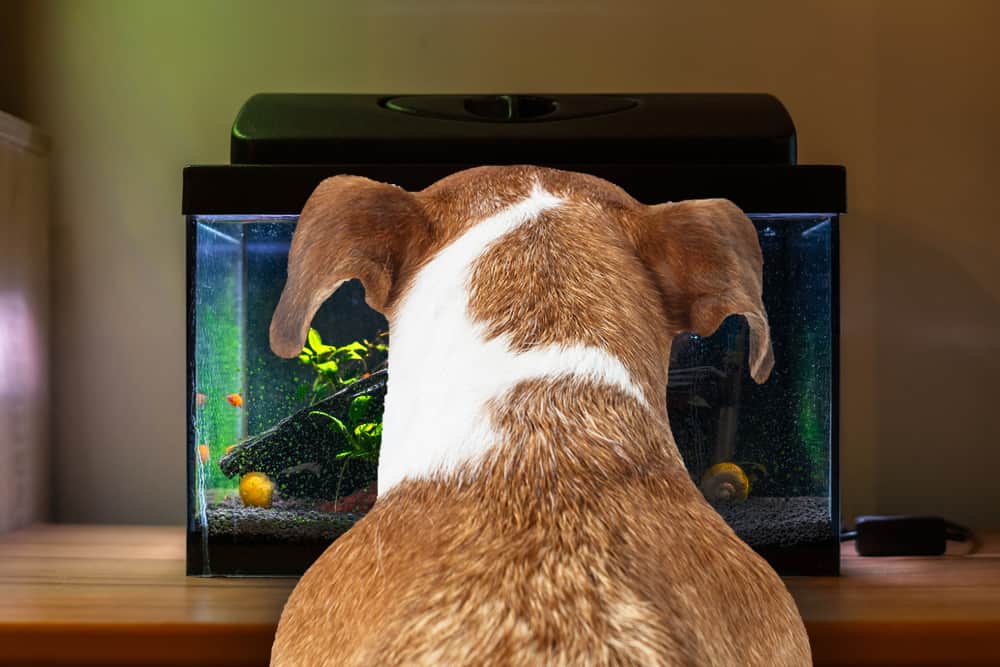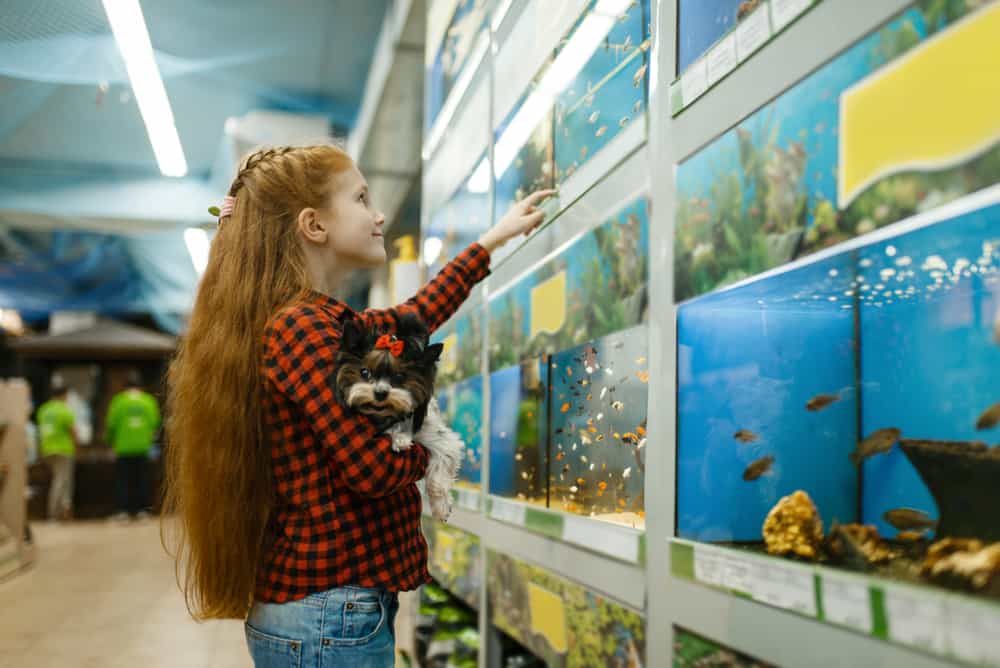“This post contains affiliate links, and I will be compensated if you make a purchase after clicking on my links.”
Bringing a new pet into a home that another animal has already marked out as their own territory is always daunting and sometimes tricky.
There is always the possibility of the animals not getting along, harming each other (on purpose or by accident), or getting into each other’s food or waste and getting sick or making a mess.

Fortunately for canine lovers who are looking to get into fishkeeping, fish and dogs generally cohabitate well, mostly not interacting with one another, except perhaps for a dog who becomes entranced with the moving colors of the fish in the tank, just like humans do.
While integrating fish into a home already occupied by a dog is one of the easiest pet introductions to facilitate, there are still a few things all dog owners should know before bringing Nemo home to meet Fido for the first time.
1. Most dogs probably will not care much about their new housemates.
Unlike a cat, your dog is unlikely to see your new fish tank as a food source or a source of much interest at all. Dogs are not typically visual creatures, and even the brightest and most beautiful cherry shrimp in the world is unlikely to hold their attention based on color alone. Instead, dogs are attracted and intrigued based on smells and sounds, neither of which a fish tank produces much of. Because of this, it is entirely possible, even likely, that your dog will be interested by the tank for the first few days and then quickly become unconcerned about it.
2. Dogs like a controlled first introduction.
Since there is no way to know how invested your dog will be in your fish tank until it is set up and stocked, dogs should always be introduced to the fish in a carefully controlled environment. In most cases, that means a dog on a leash being allowed to sniff and examine the new fish tank, with their human ready to remove them from the situation if they get too excited or overly worked up. A dog that is too interested in the fish might have their ears up, wag their tails, stalk or crouch in front of the tank, or stare intensely at the fish. Any dog showing these signs probably is not ready to be around the fish.

3. Excitable or curious dogs might knock over or fall into a fish tank.
While dogs are unlikely to intentionally kill or eat the fish in a fish tank, they may still unintentionally do harm to the tank and its occupants, as well as, potentially, themselves. A curious dog exploring the tank without being aware of its surroundings might knock the tank over, or climb on top of it and fall in. Both of these scenarios are likely to kill your fish, injure your dog, and, if nothing else, create a huge mess in your house. This is why dogs should be supervised around fish tanks and dogs that are overly invested in a fish tank should be kept away from it.
4. Tank placement is a key consideration for dog safety.
This means both safety of the tank from the dog and the safety of the dog in case of accidents. Tanks should be high enough that dogs cannot easily reach them, and far enough away from other furniture that dogs cannot crawl over to the tank from the top of the couch or another table. Aquarists should also take care that they only place their tank on sturdy, stable pieces of furniture that cannot be knocked over by (or onto) a dog. It may also be necessary to set up the tank in an area the dog has no access to, in order to prevent accidents.
5. Dogs should never be left alone with the fish tank.
No matter how chill or well-conditioned a dog is, it is never a good idea to leave them unsupervised around a fish tank, as even a briefly curious dog can have disastrous consequences. This may mean containing the dog or closing off rooms before leaving the house, or even setting up the tank away from the dog entirely. Remember that no matter how much you trust your dog, it only takes a minute of uncharacteristic behavior for a previously friendly cohabitation to change drastically for the worse.
Overall, keeping dogs and fish in the same household is one of the easier tasks in the world of pet cohabitations.
While owners should remain alert for their dog showing any undue interest in the fish tank, and take steps to keep the animals separate when the humans are not around, the fact of the matter is that these two pets are unlikely to interact much, if at all.
The contained nature of a fish tank makes them some of the most easy-going housemates in the animal world, and even dogs with a tendency toward mischief will most likely be perfectly happy to leave the fish to their own devices.












